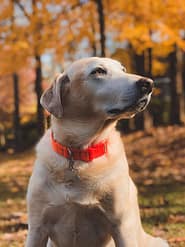This is the most enquired topic – How to dog potty training. Potty training a dog requires teaching them where and when to eliminate their waste. It requires consistency, patience, and positive reinforcement.
Here are some tips you can follow to effectively potty train your dog:
Establish a routine:
Dogs thrive on routine, so set a regular schedule for feeding, exercise, and bathroom breaks. Puppies do their things after every meal, while adult dogs do when taken out on scheduled time. This helps them develop a predictable routine for elimination.
Choose a designated potty area:
Designate the area where you want your dog to eliminate, preferably outdoors in a specific spot. Take them to that spot consistently, so they associate it with going potty.
Watch for signs:
Pay attention to your dog’s behavior and body language when they need to eliminate them. Signs may include sniffing the ground, circling, or becoming restless and making a particular sound. Act promptly when you notice these signs.
Give them privacy
Don’t stare at your dog when they are busy doing their things. Leave them alone for a while. Lack of privacy is the reason dogs are unable to do even when you take to the area and when they come back accident happens.
Take them out frequently:
Puppies have smaller bladders and need to eliminate more frequently after every meal. Take your dog outside to their designated potty area every 1-2 hours, especially after meals, playtime, and naps. For adult dogs, adjust the frequency based on their needs.
Use a command:
Choose a specific command, such as “go potty” “do your business,” and ” do it now”, and use it consistently every time you take your dog to their potty area. some pet owners use whistles too. This helps them associate the command with the action.
Reward and praise:
When your dog eliminates in the correct spot, immediately praise and reward them with treats, enthusiastic praise, and petting. Positive reinforcement encourages them to repeat the desired behavior.
Supervise and prevent accidents:
Until your dog is fully potty trained, keep a close eye on them when they’re indoors. If you can’t supervise, confine them to a small area with a crate or baby gates. This prevents accidents and teaches them to hold their bladder. take them out or designated place whenever they show signs.
Clean accidents properly:
If your dog has an accident indoors, clean it thoroughly with an enzymatic cleaner specifically designed for pet urine. Avoid using ammonia-based cleaners, as the scent can attract dogs back to the same spot.
It's worth noting that while ammonia-free cleaners may be less harsh in terms of odor and potential health effects, they may still contain other chemicals that you might want to consider
Be patient and consistent:
Potty training takes time and accidents are normal. Perseverance, remaining consistent with the routine, and continuing positive reinforcement. Consistency and positive reinforcement are key to successful potty training.
Please remember, every dog is unique, and the time it takes to potty train may vary. Some dogs may learn it quickly, while others may take longer. Stay consistent, be patient, and celebrate your dog’s progress along the way. If you’re facing challenges or need additional guidance, consider consulting a professional dog trainer for personalized assistance.
For rewarding your dog you may give the following dog treats:
- Cooked lean meat. If you need high-reward dog treats for training when you really need to command their attention, try some lean meat. …
- Your dog’s dinner- though a little boring. …
- Peanut butter. if not sensitive to it…
- Pumpkin. …
- Apple slices. …
- Fresh vegetables. …
- AdVENTuROS dog treats.




